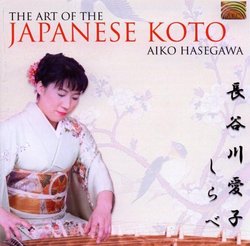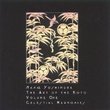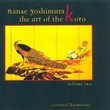| All Artists: Aiko Hasegawa Title: Art of the Japanese Koyo Members Wishing: 1 Total Copies: 0 Label: Arc Music Release Date: 10/9/2007 Album Type: Import Genres: International Music, Special Interest, Classical Style: Chamber Music Number of Discs: 1 SwapaCD Credits: 1 |
Search - Aiko Hasegawa :: Art of the Japanese Koyo
 | Aiko Hasegawa Art of the Japanese Koyo Genres: International Music, Special Interest, Classical
|
Larger Image |
CD DetailsSimilar CDs |
CD ReviewsA beautiful recording of classical and contemporary solo kot W. Hallaran | Tokyo, Japan | 03/07/2008 (5 out of 5 stars) "Anyone interested in hearing a beautifully played and recorded set of music for solo koto would no doubt greatly appreciate this recording, a very satisfying selection of classical pieces from Japan's Edo period and several wonderful compositions for solo koto penned by the performer.
The artist on this recording is Aiko Hasegawa, a gifted performer on the koto in the tradition of the Ikuta school and a graduate of the Tokyo National University of Fine Arts and Music. In addition to being a very active member of the classical Japanese music scene in her native Japan and internationally, Ms. Hasegawa is also a very creative and interesting composer of music for the koto. Of the three classical pieces included on this recording, "Midare" and "Rokudan" were composed by Yatsuhashi Kengyo (1614-1685), the great popularizer of the koto in the Edo period and founder of the current styles of koto perfomance. The third is "Akikaze no Kyoku", a later composition by another Edo composer, Mitsuzaki Kengyo (Kengyo was a title commonly given to talented blind musicians). These three pieces are quite different in tone and are expertly played by Ms. Hasegawa. I find Ms. Hasegawa's original compositions for koto particularly compelling. Much of Japanese music has as its inspiration the elements of nature. Her music follows in this tradition. First we hear "The Moment of Spring", a piece comprised of two short movements expressing the transition from the stark stillness of winter into the buzz and life of spring. "Yamato", a four part composition, has as its theme four elements of nature (Flowers, Birds, Wind and Moon) and is the first piece Ms. Hasegawa wrote for koto. "Urizun" is based on an Okinawan scale which gives it a somewhat brighter feeling in contrast to the generally more reflective character of the other pieces. Again, nature plays a role here in the expression of wind and the sound of pounding waves. Kisogawa is a river in central Japan that flows from the area around Nagano and empties into the Ise Bay. "Kiso Flowing", Ms. Hasegawa's musical expression of this river, is lighter in tone but played here with great feeling and expression. The last of the original pieces is entitled "Shirabe" and is written in three parts. "Sakura" (cherry blossoms) is probably the most and well known of Japanese melodies and is given here a fresh and original treatment. "Nenneko" is a traditional Japanese lullaby arranged by Ms. Hasegawa for her own children to listen to. "Ondo", the final movement, is an energetic and rhythmic piece that is reminiscent of much minyo (folk music) and a very fitting choice for the closing selection on this CD. For those new to Japanese music, this recording would be a great place to start. A fine selection of representative classical pieces along with several creative yet accessible original compositions ensure a very good introduction the the art of the Japanese koto. " |

 Track Listings (14) - Disc #1
Track Listings (14) - Disc #1
